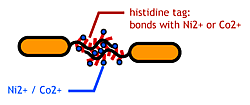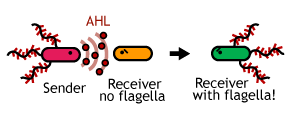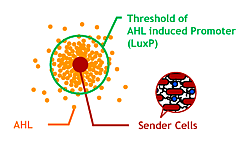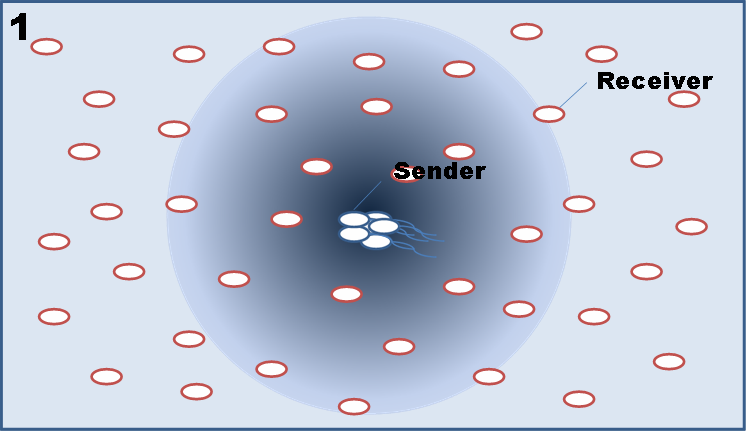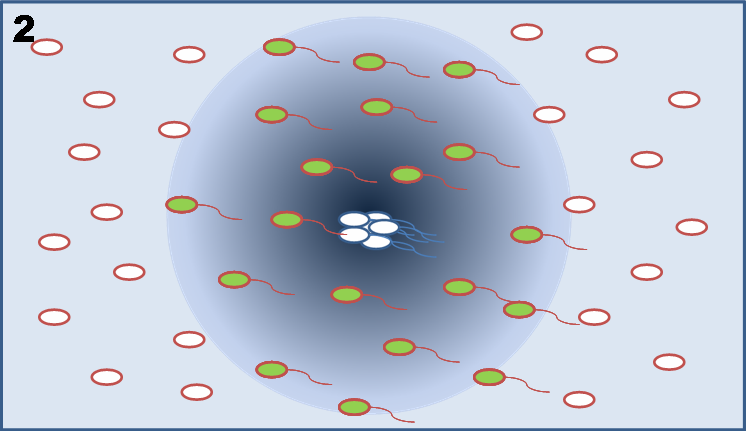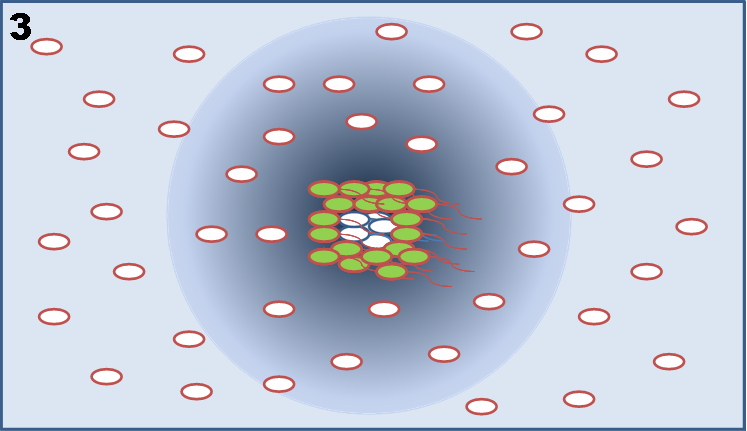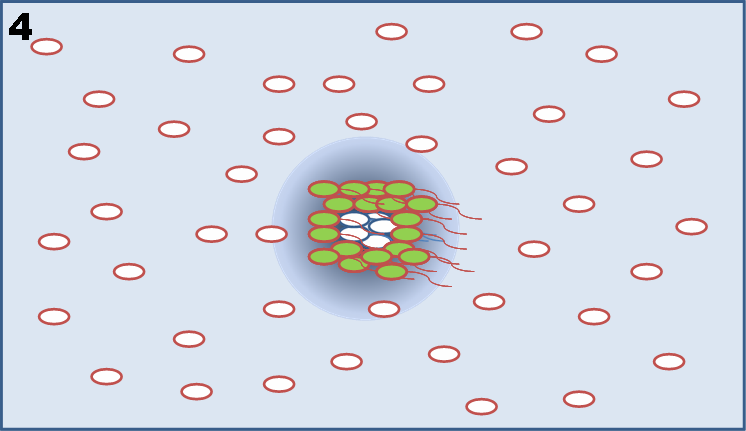Chiba/Project Design
From 2007.igem.org
(Difference between revisions)
m (→What our system requires) |
(→How Our System Works) |
||
| Line 42: | Line 42: | ||
#しかしこのままでは大腸菌の集合体が再現なく大きくなってしまいます。そこでReceiverはAHLを分解します。AHLの拡散が抑えられ、鞭毛が生えるReceiverの数が制限されるので大きさが有限に定まります。<br><br> | #しかしこのままでは大腸菌の集合体が再現なく大きくなってしまいます。そこでReceiverはAHLを分解します。AHLの拡散が抑えられ、鞭毛が生えるReceiverの数が制限されるので大きさが有限に定まります。<br><br> | ||
| - | #Senders stick each other | + | #Senders stick to each other by way of metal ions using flagella displaying histidines. They also produce AHL.<br> |
| - | #Receivers | + | #Receivers express his/flagella and GFP near senders (in high [AHL]).<br> |
| - | #Receivers stick around senders | + | #Receivers stick around senders by way of metal ions.<br> |
| - | # | + | #This way, bacteria cluster and grow like a snowball. At the same time, receivers degrade AHL and thus limit the space where AHL reaches. By controlling the rate of AHL degradation, ball growth is limited and have defined size like MARIMO.<br><br> |
| - | + | ||
| - | + | ||
| - | + | ||
| - | + | ||
| - | + | ||
Revision as of 14:21, 26 October 2007
|
Introduction | Project Design ( 1.Sticky Hands | 2.Communication | 3.Size Control ) | Making Marimos | Our Goal || Team Members | メンバ連絡簿 |
Project Design
Concept
ものがたり
 社団法人 農林水産技術情報協会http://www.afftis.or.jp/index.html
社団法人 農林水産技術情報協会http://www.afftis.or.jp/index.html
ばらばらになっている大腸菌を一ヶ所に集めて吸着させて、まりものような球体の大腸菌の集合体を作ることを目指した。(We aimed to make a spherical gathering of bacteria such like marimo by scattered bacteria aggregating and sticking each other.)
What our system requires
1.Sticky TagMake a His-tagged Flagella. We aimed to stick bacteria by displaying histidines (which bonds with metal ions) on the flagellar fillament. |
2.Communication違う遺伝子回路を持つ2つの細胞(sender&receiver)に分ける.あらかじめお互い結合しているSenderが,周りのreceiverにシグナルを与えてsticky handsを生やす.そして合体. |
3.Size ControlMake an AHL concentration gradient for quorum sensing. |
How Our System Works
- 実際の形とは違うかもしれないけど、SenderとReceiverの違いをもっとはっきりさせたほうがよいかも?
- Senderは常にヒスタグをディスプレイした鞭毛を発現させて金属イオンを介してSender同士が接着します。またSenderは常にAHLを合成します。
- AHLが届く範囲にいるReceiverはGFPを発現し、ヒスタグをディスプレイした鞭毛を発現します。
- ReceiverはSenderの周りに金属イオンを介して接着します。
- しかしこのままでは大腸菌の集合体が再現なく大きくなってしまいます。そこでReceiverはAHLを分解します。AHLの拡散が抑えられ、鞭毛が生えるReceiverの数が制限されるので大きさが有限に定まります。
- Senders stick to each other by way of metal ions using flagella displaying histidines. They also produce AHL.
- Receivers express his/flagella and GFP near senders (in high [AHL]).
- Receivers stick around senders by way of metal ions.
- This way, bacteria cluster and grow like a snowball. At the same time, receivers degrade AHL and thus limit the space where AHL reaches. By controlling the rate of AHL degradation, ball growth is limited and have defined size like MARIMO.


